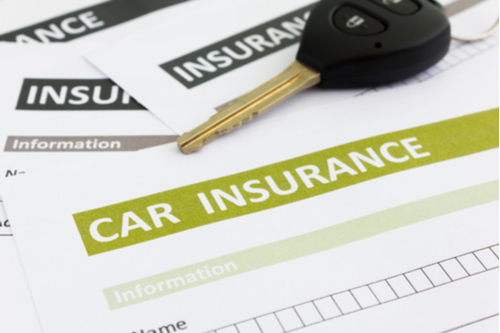The bad news is that the price of car insurance has been on the climb for the past few years. What’s worse is that the average cost of car insurance is expected to grow even higher throughout 2018. Currently, the average American spends $125 per month or $1,503 per year.
The cost of car insurance alone might not seem like such a monumental bill. Added to increases in fuel costs, groceries, and other necessary expenses only makes paying for car insurance another necessary burden. More people across the country are looking for ways to pay less.
There are a number of factors that determine what it costs to get insurance for your vehicle including:
- Your Residential State
- Your Age
- Your Gender
- Length of Time with Your Current Issuer
- Additional Policies with the Same Company
Understanding Your Car Insurance
Car insurance is there to protect you when you are in an accident. It covers medical costs and property damage. Auto insurance pays to repair or replace your vehicle or that of another driver. It also pays for medical treatment for you or someone else who is injured. However, the exact coverage and your state laws determine when and how much your coverage will pay.
Many people have been with the same car insurance company since they started driving. They may have started out on their parent’s insurance policy before taking out a policy of their own once they move out of the home. They pick up the same coverage and pay their premiums when they’re due. When they have an accident, they have no idea what is covered and what isn’t.
Car insurance is required by law in every state other than New Hampshire. Penalties for driving without it include fines, revoking your driver’s license, or even jail time. Even if you only drive across the street, you need car insurance. As soon as your vehicle touches public property, you become liable for accidents and injuries that occur. The insurance company can advise you on the minimal requirements for your state.

Some Common Insurance Terms and What They Mean
The best way to understand your auto insurance needs is by learning the language. There are many terms used to describe insurance but these are some of the most common. They can help you decide how much insurance you really need so you can get the lowest possible price on your premiums.
Liability Insurance
This type of insurance pays for injuries to other parties and damages to their property when you are at fault. It doesn’t include coverage for you and your vehicle. It only covers others that you caused damage or injury to.
Your state sets the minimum for liability insurance coverage. Many drivers stick with this number. However, keep in mind that if you are responsible for an accident that causes serious damages to another driver’s car, you will be responsible for paying the balance of the cost. For example, in California, drivers are required to carry at least $5,000 in liability insurance. That’s only half the amount required in other states. Considering the high cost of new vehicles these days, carrying even the highest minimums won’t come close to replacing a new vehicle or even major repairs. Failing to have liability coverage doesn’t excuse you from accountability when an accident is your fault.
Drivers do have the option to carry more liability to protect them. Of course, this means paying even more for insurance premiums. When you weigh out your options, having adequate coverage could end up saving you money if an accident happens.
Full Coverage or Comprehensive Insurance
This type of insurance pays damages caused to your vehicle from something other than a car accident. It pays if your car is vandalized, in a flood, damaged by hail or fire, or it is stolen.
Liability Limits
This is the maximum amount that your policy will pay for injuries. This number includes an amount per person and per accident. It also includes the amount it will pay for property damage. For example, coverage with liability limits of 25/50/25 means the policy pays $25,000 per person, $50,000 per accident, and $25,000 for property damage per accident. This amount is common for auto insurance policies. States determine the lowest liability limits you must have by law.
Deductible
The deductible is the amount you must pay before the coverage from the insurance company kicks in. Regardless of the amount of damages, you have to pay the deductible first. If the total amount of damages is $529 and your deductible is $500, you have to pay the $500 before the insurance company pays. If the damages are $1,590, you pay the deductible of $500 and the insurance picks up the tab for the remaining $1,090, if it is covered damages.
Premiums
This is the amount you pay your insurance company for coverage. Premiums may be offered monthly, in terms, or annually. Some insurance companies charge less when you pay for longer periods. This is one way you can reduce your rates below the average cost of car insurance without reducing your coverage.
Another way is to increase your deductible. Generally, the higher your deductible is, the lower your premiums are. Keep in mind that if you double or triple your premium, you have to come up with that amount of money before your insurance pays. If that will be a financial burden on you, it might not be the best approach to lowering your insurance costs.

When You Are Considered a “High-risk” Driver
This is another area where the state you live in matters. In different states, different factors are used to determine if you are a high-risk driver or not. In some for example, even a bad credit score can end up costing you more on your coverage. This practice often puts a financial burden on the people who are the least equipped to absorb the extra costs.
Having a poor driving record, being too young or too old, or having multiple car accidents can end up increasing the cost of your insurance premiums. Don’t let worries about the increase in the average cost of car insurance keep you from getting the best insurance coverage for your needs. Those insurance discounts come with a different kind of cost. Some of the biggest complaints by these drivers are that the companies are slow to pay, if at all, once the insured submits a claim.
Other complaints include offering limited optional coverage. There’s no personal attention to find the right policy for the individual. Everyone gets the same options whether they need more or less. These companies also impose restrictions that known insurance companies don’t. A lot of coverage that is offered, such as roadside assistance or rental reimbursement, must be included separately. That means you end up paying more for every additional coverage type you add.
No-Nonsense Ways to Lower Your Auto Insurance
Lowering your coverage isn’t a great way to pay below the average cost of car insurance, but there are still some smart ways to get your costs down. Keep your focus on getting quality coverage without paying top dollar.
Should I shop around for insurance?
That depends. If you are taking out insurance for the first time, definitely shop around for the lowest rates. You might be surprised to find that a small, private insurance company offers lower premiums than some of the big name companies.
On the other hand, if you’ve been with the same insurance company for years, you may be getting a number of discounts that you aren’t even aware of. It can’t hurt to compare rates with other companies but you could end up losing discounts that you spent years earning.
Also, don’t base your comparisons on rates alone. Once you know the different terms used to describe insurance policies, you should know what’s important and what’s not. You can also ask your friends and relatives who they use and how satisfied they are with their insurance company. Get the benefit of other people’s experience and prevent finding out the hard way that a company isn’t dependable at processing claims.
What if I have a teenage driver?
New drivers are at the top of the high-risk driver’s list. Now that texting and driving have become such a serious issue, the average cost of car insurance for teens is even higher. Parents are often petrified when they first learn how much insuring their teen is going to cost. Don’t let the high cost of premiums scare you into going to a cut-rate insurance company for more affordable coverage. There’s a reason insuring teen drivers is so expensive and it’s a good one!
Talk with the insurance company about programs they offer to reduce these costs. If your child is an honor student, you may be able to get a discount. Also, some insurance companies reduce their insurance rates for taking a safety driving course. Ask your insurance company before you enroll your teen if they’re one of them. Even if they don’t, a course in safety driving could help protect you and your teen. Teens often get a different perspective about driving safely once they realize the risks of distracted driving and other unhealthy driving habits.
Isn’t raising my rates due to my age discrimination?
Insurance companies use statistics to determine who is more likely to have an accident. They base their premiums on those statistics wherever they fall. This includes the high-risk age groups, which include drivers under 25-years-old and those who are 65 or older. The law considers the high-risk of the insurance company having to pay for an accident as a valid reason to charge more.
Like teens, senior drivers also have the option to take a safety driving course to reduce their premiums. Ask your insurance company if they offer a discount for a completed safety course. Also, make sure you know which ones are accepted in your state. Valid courses are even offered online for more convenience. Even if you only get a 10% deduction on your premiums, that can results in hundreds of dollars saved annually.
What if my insurance keeps going up with the same company?
Insurance companies often offer programs for their long-term customers who haven’t had any accidents for a specified period of time. Although they offer these programs, they aren’t always forthcoming with the details.
Make an appointment with your insurance agent. Ask them specifically why your rates haven’t gone down. Your premiums should reflect the diminishing value of your vehicle every year and your loyal policy coverage. If your age has put you into the high-risk category or if you purchased a newer or more expensive vehicle, your premiums are more likely to go up than down. Find your best options by asking your insurance agent what you can do to reduce your costs.
Although you don’t want to reduce your liability coverage, there may be things that you can have taken off your insurance policy to save money. Sometimes little extras like tow truck service might be unnecessary for the way and distance that you normally drive. In fact, if you only drive occasionally, you might get discounts for that too! You shouldn’t pay the same amount in premiums to drive a few miles each week as a driver who spends hours on the roads each day.
Finally, the most important thing you can do to stay below the average cost of car insurance is to keep a good driving record. Every time you have an accident, your insurance premiums will reflect it.
Paying increasing car insurance premiums can be a hassle. When you have an accident, you’ll be glad you have adequate coverage to pay any damages that you caused. Your best resource for finding ways to reduce your premiums is through your insurance company.
When you have an accident that involves extensive property damage and bodily injury, you need a personal injury attorney to help. Once an accident occurs, insurance companies don’t always work to the advantage of the injured party. Contact Batta Fulkerson to schedule a free consultation to discuss your car accident case.




